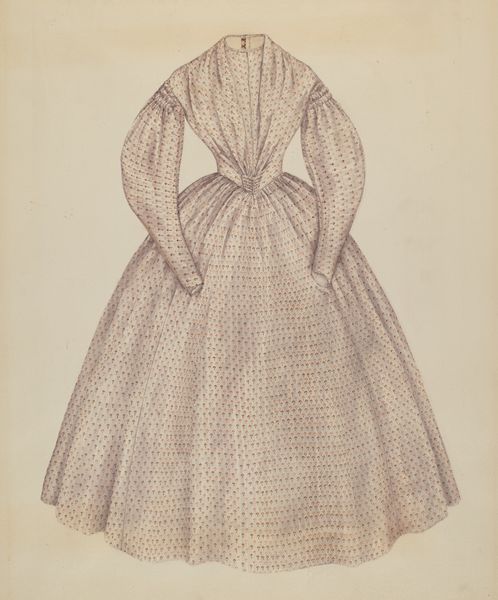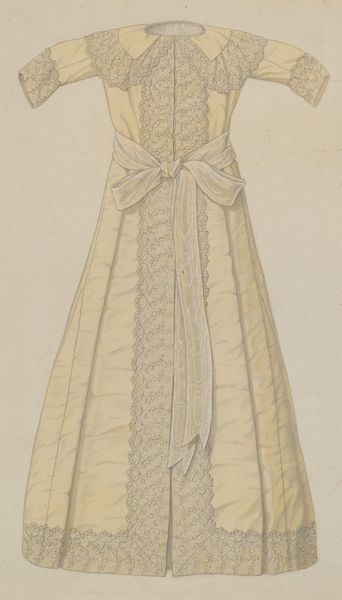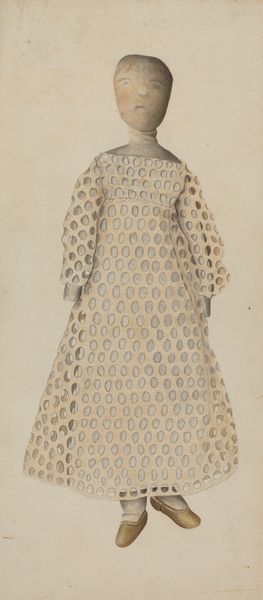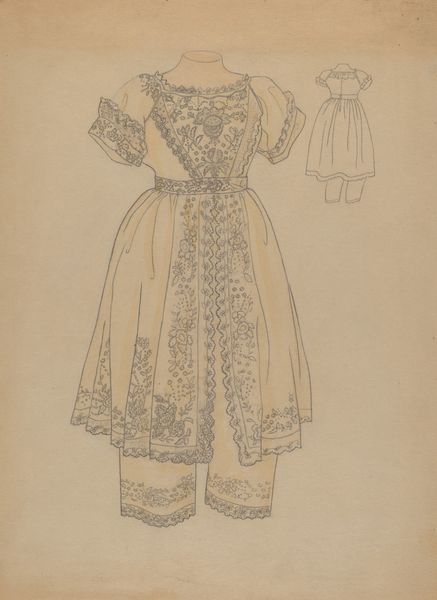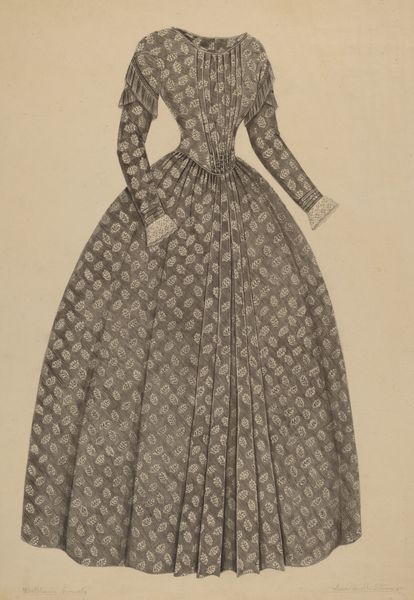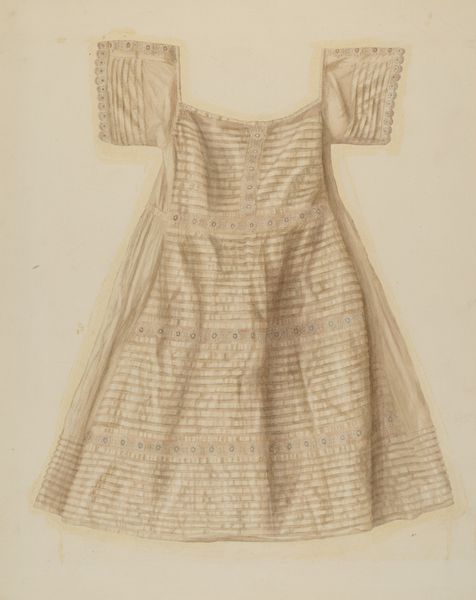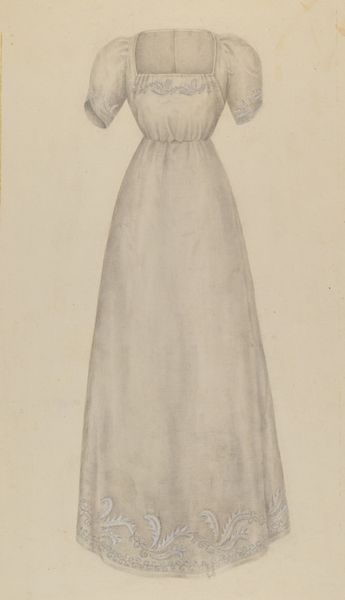
drawing
#
portrait
#
fashion design
#
drawing
#
underwear fashion design
#
fashion mockup
#
fashion and textile design
#
figuration
#
historical fashion
#
fabric design
#
textile design
#
academic-art
#
fashion sketch
#
ethnic design
#
clothing design
Dimensions: overall: 45.6 x 37.8 cm (17 15/16 x 14 7/8 in.) Original IAD Object: bust: 32"; waist: 27"; sleeves: 20" inseam, 32" outseam; bodice: 14" long; skirt: 37" long, 100" wide
Copyright: National Gallery of Art: CC0 1.0
Curator: So, here we have a drawing titled "Dress" by Melita Hofmann, likely created around 1937. What’s your first impression? Editor: It’s… ghosts of fashion past! Seriously, I’m getting spectral vibes, like this dress just floated in from another century. I love the lightness, even in the draftsmanship; the puffed sleeves give it such a romantic silhouette. Curator: The date is significant, situating the work in a pre-war era where fashion often emphasized a return to traditional femininity, a stark contrast to the more androgynous styles of the 1920s. We see that high neckline, the cinched waist. How do you feel it relates to conceptions of identity or perhaps gendered expectation? Editor: Expectations, for sure. Those sleeves are amazing but not exactly practical. It whispers 'leisure' and a very specific presentation of womanhood – one focused on display, on grace, more than getting stuff done. What did she *do* in this dress? Curator: Exactly. Though only a design, the drawing represents those expectations materialized as garments and their societal impacts and influences on wearers, while speaking also to aspirations for beauty during times of global insecurity. And how are we to read it, then? As subversive, or submissive? Editor: Maybe a bit of both? I picture the person who wore it finding a certain freedom within those constraints, a personal expression bubbling up from within the expected forms. Those gathered fabrics hint at volume, secrets... or just maybe it tickles. Either way, for me, it embodies something deeper than simple aesthetics. Curator: Thank you. I appreciate that reading, especially in its willingness to understand the past not as a static entity, but as a mutable collection of both oppressions and unrecognized or unrealized agency. Editor: You're welcome. After all, every outfit is a story.
Comments
No comments
Be the first to comment and join the conversation on the ultimate creative platform.
